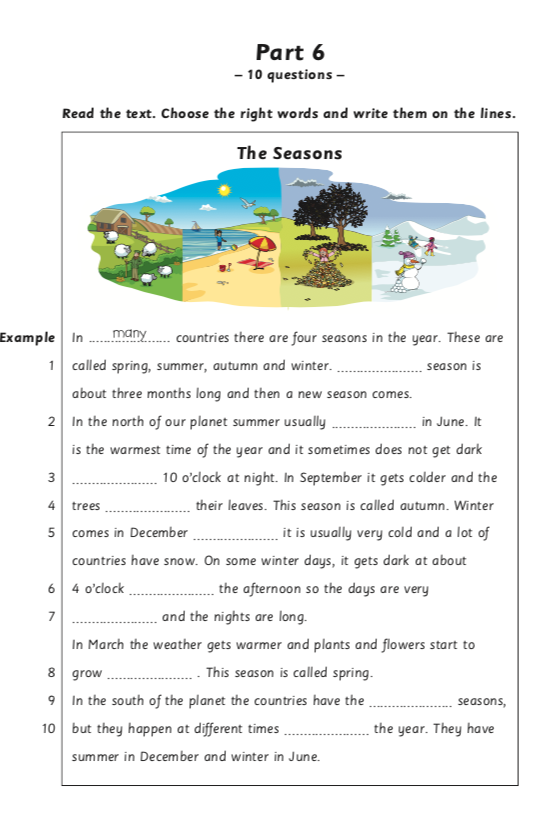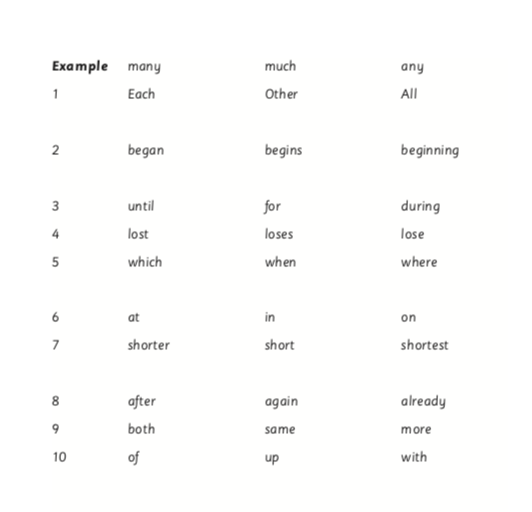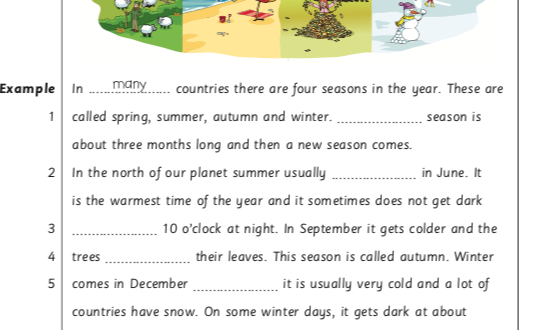About A2 Flyers Part 4
In this post I’m going to focus on A2 Flyers Reading and Writing Part 4. Many young learners find this part of the test quite challenging.

What’s in this part?
A factual text (about 150 words) with an example and ten gaps. The text appears on the first (left-hand) page.
On the second (right-hand) page, there are three options to choose from to complete each gap.
What does this part test?
Mainly grammar. See below for more information on this.
What will students read?
A factual text. The kind we find in CLIIL course books.
Let’s look at the sample task from Sample Papers Volume 1, available to download here:

The text is mainly in the present tense and is impersonal in style. Many of the sentences at A2 Flyers level are compound sentences (two clauses combined with and, but, because, etc)

As you can see from the words in the options, word classes tested are determiners, adverbs, prepositions, phrasal verbs, verb forms, conjunctions, pronouns.
Tips
1. Read the title of the text. In class, I show/tell students the title and ask them what they know about the subject. Any words they can think of connected to it.
Make this fun. Ask them to think of words they think WILL be in the text (e.g. winter, spring, animals) as well as words that DEFINITELY WON’T be in the text! (e.g. burgers, skyscraper)
2. Look at the picture too. Again, it will help with the topic and continuing on from the title, can generate ideas for what content and lexis students will read.
3. Read the text through till the end. *. Many students do not do this, but rather, start to fill in gaps immediately. This is a big mistake!
Set a task to encourage students to read the whole text through – e.g. read the text. Are all the verbs in the same tense?
4. Make sure students are looking at both pages. * Every year, I see at least one student who starts writing their own words in the gaps. They don’t realise that the words are there for them to choose from!
5. Start with the easier gaps. Some are always more difficult for everyone. Other gaps are more difficult for a particular student. The more context you have, the easier the harder gaps get!
6. If in doubt, GUESS! Here in Spain at least, students have a tendency to not put an answer for something they’re not sure about. Often because unfortunately at school, some teachers continue to penalise wrong answers and deduct marks. This does NOT happen in Cambridge exams!
7. Write the word on the line in the text – this is how you need to answer anyway, and ‘seeing’ a word in context often helps you decide if it ‘looks’ right. (And ‘sounds’ right too – I train students to say the sentences to themselves silently in their head.)
8. Check you’ve answered all the questions. * Lots of students miss a gap, especially if they’ve left it till the end because it’s a difficult one.

